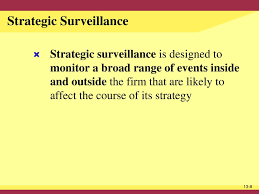Surveillance systems have become an essential part of our daily lives, providing us with a sense of security and peace of mind. Wired and wireless surveillance systems are two popular options that offer unique benefits and drawbacks.
Wired surveillance systems have been used for decades and are still widely popular today. They use cables to connect the cameras to the recording device, which is usually located in a central location such as a control room or server room. The main advantage of wired systems is that they provide a stable and reliable connection, ensuring high-quality video footage with no interruptions. They are also less susceptible to interference from other electronic devices or nearby wireless signals.
However, installing a wired surveillance system can be costly and time-consuming. It requires running cables through walls, ceilings, and floors, which can be challenging in older buildings or those with complex layouts. Additionally, the cables can be vulnerable to damage from weather or vandalism.
Wireless surveillance systems offer a more flexible and cost-effective solution. Instead of using cables, they use Wi-Fi or cellular networks to transmit video footage from the cameras to the recording device. This eliminates the need for extensive wiring installation and allows for greater mobility in camera placement.
Wireless systems are also easier to expand or modify as needed, as there are no physical cables to reroute. They can also be more discreet than wired systems since there are no visible wires or cables.
However, wireless surveillance systems can suffer from signal interference or disruptions due to their reliance on wireless networks. This can result in lower-quality video footage or even lost connections altogether. Additionally, wireless systems may require more frequent maintenance due to their reliance on batteries or power sources.
Ultimately, whether you choose a wired or wireless surveillance system will depend on your specific needs and preferences. Wired systems offer reliability and stability but come at a higher cost and installation time. Wireless systems offer flexibility and ease of use but may suffer from signal interference issues.
Regardless of your choice, it is essential to invest in a high-quality surveillance system that meets your needs and provides the security and peace of mind you deserve.
5 Essential Tips for Effective Wired and Wireless Surveillance
- Choose the right type of surveillance for your needs
- Consider the environment
- Use multiple cameras
- Utilize motion detection technology
- Regularly maintain your system
Choose the right type of surveillance for your needs
When it comes to surveillance systems, choosing the right type of system for your needs is crucial. Whether you opt for a wired or wireless system, it’s important to consider your specific requirements and budget.
Wired systems are ideal for those who need a reliable and stable connection. They provide high-quality video footage with no interruptions and are less susceptible to interference from other electronic devices or nearby wireless signals. However, they require extensive wiring installation, which can be costly and time-consuming.
Wireless systems offer greater flexibility and ease of use, making them perfect for those who need mobility in camera placement. They are also easier to expand or modify as needed, with no physical cables to reroute. However, wireless systems may suffer from signal interference issues and require more frequent maintenance.
When choosing the right type of surveillance system for your needs, consider factors such as the size of the area you need to monitor, the level of security required, and your budget. It’s also important to invest in high-quality equipment that meets your needs and provides reliable security.
In conclusion, whether you choose a wired or wireless surveillance system depends on your specific needs. By weighing the pros and cons of each option and considering your requirements carefully before making a decision, you can ensure that you choose the right type of surveillance system for your needs.
Consider the environment
When choosing between wired and wireless surveillance systems, it is important to consider the environment in which the system will be installed. The environment can play a significant role in the performance and reliability of the system.
For example, if you are installing a surveillance system in an area with a lot of electromagnetic interference, such as near power lines or other electronic devices, a wired system may be a better choice. Wired systems are less susceptible to interference and can provide more reliable video footage.
On the other hand, if you need to install cameras in multiple locations or in areas where running cables is not feasible, a wireless system may be the better option. Wireless systems are more flexible and can be easily moved or expanded as needed.
Additionally, consider factors such as weather conditions and physical obstructions when choosing between wired and wireless systems. Wireless signals can be affected by weather conditions such as heavy rain or snow, while physical obstructions such as walls or trees can interfere with signal strength.
By considering the environment in which your surveillance system will be installed, you can choose the best option for your needs and ensure that your system provides reliable and high-quality video footage.
Use multiple cameras
When it comes to surveillance, having multiple cameras can significantly enhance the security of your property. Whether you choose wired or wireless cameras, using multiple cameras can provide a more comprehensive view of your surroundings and help identify potential threats.
Using multiple cameras allows you to cover more ground and capture footage from different angles. This can help you monitor blind spots and areas that may be difficult to see with just one camera. Additionally, having multiple cameras can help you track the movement of people or vehicles across your property, making it easier to identify suspicious activity.
When using multiple cameras, it’s essential to ensure that they work together seamlessly. This means choosing cameras that are compatible with each other and with your recording device or software. You should also consider the placement of each camera and how they will work together to provide a complete view of your surroundings.
One advantage of using wired cameras is that they can be connected directly to a central recording device, allowing for easy access to all footage in one place. Wireless cameras, on the other hand, may require additional software or cloud storage solutions to ensure all footage is captured and stored securely.
In conclusion, using multiple cameras is a simple yet effective way to enhance the security of your property. Whether you choose wired or wireless cameras, make sure they work together seamlessly and provide a comprehensive view of your surroundings. With the right surveillance system in place, you can have peace of mind knowing that your property is protected around the clock.
Utilize motion detection technology
Motion detection technology is a valuable feature that can enhance the effectiveness of both wired and wireless surveillance systems. By detecting movement in the camera’s field of view, motion detection can trigger alerts or recordings, allowing for quick identification of potential security threats.
In addition to providing an extra layer of security, motion detection technology can also help conserve storage space and reduce bandwidth usage. Instead of recording continuously, the camera only records when motion is detected, resulting in smaller file sizes and less strain on your network.
When utilizing motion detection technology, it is essential to adjust the sensitivity settings to avoid false alarms triggered by non-threatening movements such as swaying trees or passing vehicles. It is also important to ensure that the camera’s field of view covers all potential entry points and areas of concern.
Whether you choose a wired or wireless surveillance system, incorporating motion detection technology can be a valuable tool in enhancing your security measures. By identifying potential threats quickly and efficiently, you can rest assured that your property is protected around the clock.
Regularly maintain your system
Regular maintenance is crucial for ensuring that your wired or wireless surveillance system is functioning correctly and providing optimal security. Neglecting to maintain your system can result in degraded video quality, lost footage, and even system failure.
For wired systems, it’s important to inspect cables regularly for signs of wear or damage. Wires that are frayed or exposed can be vulnerable to weather damage or vandalism. Regularly testing the cameras and recording device can also help identify any issues before they become more severe.
Wireless systems require additional maintenance due to their reliance on batteries or power sources. It’s essential to ensure that all batteries are fully charged and replaced as needed. Additionally, checking wireless signal strength can help identify any areas with weak connections that may need additional network support.
Regardless of the type of surveillance system you have, regular software updates can also improve system performance and fix any vulnerabilities in the security software.
By maintaining your wired or wireless surveillance system regularly, you can ensure that it is always functioning at its best and providing the security you need. Regular maintenance can also help identify potential issues before they become more severe, saving you time and money in the long run.




